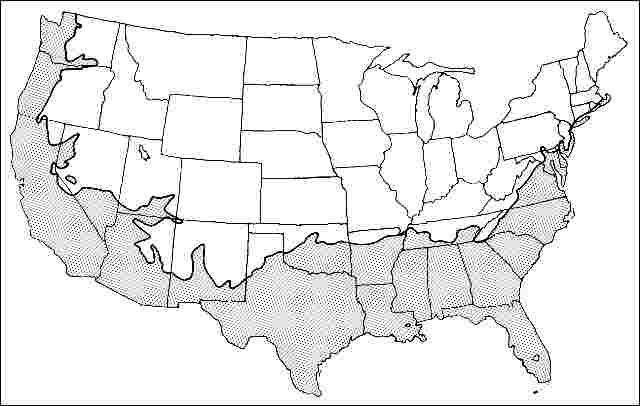Introduction
`Angustifolia' Dahoon Holly has narrower, more linear leaves than the species and more berries. Attractive when tightly clipped into a tall screen or allowed to grow naturally into its single or multi-trunked, small-tree form, `Angustifolia' Dahoon Holly is ideal for a variety of landscape settings. Capable of reaching 40 feet in height, it is usually seen at a height of 20 to 30 feet with a 10 to 18-foot spread. The smooth, supple, shiny, dark green, evergreen leaves, two to three inches long, have just a few serrations near the tip. Possessing male and female flowers on separate plants, at least two `Angustifolia' Dahoon Hollies must be planted in the landscape to ensure production of the brilliant red, sometimes yellow, small berries in fall and winter. The berries serve as an excellent food source for wildlife.

Credit: Ed Gilman
General Information
Scientific name: Ilex cassine
Pronunciation: EYE-lecks kuh-SIGH-nee
Common name(s): 'Angustifolia' Dahoon Holly
Family: Aquifoliaceae
USDA hardiness zones: 7A through 11 (Fig. 2)
Origin: native to North America
Invasive potential: little invasive potential
Uses: hedge; screen; specimen; deck or patio; reclamation; tree lawn 3-4 feet wide; tree lawn 4-6 feet wide; tree lawn > 6 ft wide; container or planter; Bonsai; highway median
Availability: generally available

Description
Height: 20 to 30 feet
Spread: 10 to 18 feet
Crown uniformity: irregular
Crown shape: round, vase
Crown density: dense
Growth rate: moderate
Texture: fine
Foliage
Leaf arrangement: alternate (Fig. 3)
Leaf type: simple
Leaf margin: entire, pectinate
Leaf shape: oblong, oblanceolate
Leaf venation: pinnate
Leaf type and persistence: evergreen
Leaf blade length: 2 to 4 inches
Leaf color: green
Fall color: no color change
Fall characteristic: not showy

Flower
Flower color: white/cream/gray
Flower characteristics: not showy
Fruit
Fruit shape: round
Fruit length: less than .5 inch
Fruit covering: fleshy
Fruit color: red
Fruit characteristics: does not attract wildlife; not showy; fruit/leaves not a litter problem
Trunk and Branches
Trunk/bark/branches: branches droop; not showy; typically multi-trunked; thorns
Pruning requirement: needed for strong structure
Breakage: resistant
Current year twig color: green, brown
Current year twig thickness: thin
Wood specific gravity: unknown
Culture
Light requirement: full sun, partial sun or partial shade
Soil tolerances: clay; sand; loam; slightly alkaline; acidic; extended flooding; well-drained
Drought tolerance: moderate
Aerosol salt tolerance: moderate
Other
Roots: not a problem
Winter interest: no
Outstanding tree: no
Ozone sensitivity: unknown
Verticillium wilt susceptibility: resistant
Pest resistance: free of serious pests and diseases
Use and Management
It lends itself well to use as a specimen or small patio or shade tree, and is ideal for naturalizing in moist locations. It appears to adapt well to the confined spaces of urban and downtown landscapes but will require pruning of the drooping branches to create clearance below for pedestrians and traffic. Best to locate the plant where it will not require removal of these drooping branches to allow for the full development of the rounded, vase-shaped form. It would make a nice, fine-textured component in a shrub border or could be planted as a screen 10 feet apart.
Growing well in full sun to partial shade, `Angustifolia' Dahoon Holly does best on moist soils, and is found on wet, boggy soils of swamps in its native environment. It can tolerate drier locations with some watering but may have a thin crown.
Pests and Diseases
No pests or diseases are of major concern.